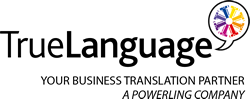In today’s hyper-connected world, brands are no longer confined to local markets. Social media platforms allow businesses to reach global audiences with a few clicks, but navigating multilingual engagement presents unique challenges. To truly connect with international users, content needs to resonate across languages and cultures. Here’s how to successfully manage multilingual social media and ensure effective global engagement.
Embrace the Power of Localization
Localization goes beyond just translating content word-for-word—it means adapting messages to the cultural context of the target audience. Idioms, humor, and even imagery may need to be adjusted to ensure relevance and avoid misinterpretations.
For example, while a simple word translation might convey the literal meaning, localization can help adjust the tone, style, and cultural references. Brands like Coca-Cola and Airbnb excel in localizing their social media campaigns to speak the language of the region—not just linguistically, but culturally.
Best Practice: Partner with native-speaking translators from agencies like TrueLanguage who understand the cultural nuances of the region you’re targeting. Use localized hashtags and be mindful of cultural events, holidays, and societal trends.
Segment Social Media Accounts for Different Regions
Managing multiple languages on a single global account can confuse audiences and dilute your message. Instead, many successful brands create separate accounts for each major language or region, tailoring content to the local audience.
Segmenting accounts helps brands maintain a cohesive presence within each language community, ensuring that all posts are relevant and engaging. It also helps with timely responses to customer inquiries, which is critical for maintaining engagement.
Best Practice: If you serve large markets in different languages, set up individual social media profiles (e.g., a Spanish-language Twitter account or a French-language Facebook page) to cater to each audience.
Leverage Machine Translation with Caution
While machine translation tools like Google Translate and DeepL have improved dramatically, they are not flawless and should not be fully relied upon for social media content. Machine translation may struggle with idioms, context, and informal language often used on social platforms.
That said, machine translation can be a useful tool for quickly drafting posts or understanding comments in unfamiliar languages. However, these translations should always be reviewed and fine-tuned by a human editor to ensure accuracy and cultural relevance.
Best Practice: Use machine translation for initial drafts, but always review and revise posts with the help of a human translator or editor who understands the language and context.
Use Multilingual Social Media Management Tools
Managing social media accounts in multiple languages can become overwhelming without the right tools. Social media management platforms like Hootsuite, Sprout Social, and Buffer allow brands to schedule posts in different languages, track engagement across regions, and maintain consistent communication.
Some tools even allow for geo-targeting specific posts to ensure that content in one language doesn’t appear on the feed of users in another region, improving audience targeting and reducing the risk of confusing followers.
Best Practice: Invest in a multilingual social media management platform that allows you to schedule, post, and track engagement across multiple regions and languages from a single interface.
Craft Multilingual Responses for Customer Engagement
Engaging with users in their native language fosters a deeper sense of connection and trust. However, managing customer inquiries and comments in multiple languages can be resource-intensive. Consider establishing multilingual customer service teams or employing multilingual chatbots to handle simple inquiries.
In cases where human intervention is needed, having predefined templates in each language for common responses can expedite replies. Prompt, relevant replies in the user’s native language build rapport and brand loyalty.
Best Practice: Create a database of commonly asked questions and responses in different languages. Train customer service teams to handle inquiries in the target languages or consider using AI-driven chatbots to manage simpler requests.
Monitor Global Conversations in Real-Time
It’s important to stay attuned to global conversations surrounding your brand in multiple languages. Social listening tools like Brandwatch, Mention, and Talkwalker can help you monitor what’s being said about your brand across different languages and regions.
By keeping track of discussions and sentiment across languages, you can respond to customer feedback, address issues before they escalate, and identify trends that can shape future content.
Best Practice: Implement a social listening strategy that covers the key languages and regions relevant to your brand. Analyze the sentiment and trends across different markets to ensure your strategy stays aligned with regional expectations.
Keep Cultural Sensitivities in Mind
Social media mistakes can go viral quickly, and cultural faux pas can seriously damage a brand’s reputation. Be cautious about cultural references, symbols, or political issues that may carry different meanings in different regions. Understanding local customs and cultural taboos is crucial to avoid unintended offenses.
Consulting with local experts or cultural consultants before launching a major campaign can save your brand from costly missteps. What works in one country may backfire in another, so thorough cultural research is essential.
Best Practice: Work with local partners or experts who understand the regional culture and can provide insight into any potential sensitivities before posting. Always review social media posts for cultural accuracy and appropriateness.
Analyze Engagement Metrics by Region and Language
Understanding how your content performs in different regions is crucial for optimizing your multilingual social media strategy. Analyze key metrics like engagement rates, reach, click-through rates, and sentiment by language or region to assess what’s working and where adjustments are needed.
Best Practice: Regularly track performance metrics for each language and region to see where content resonates the most. Use this data to refine your approach, adjusting content types, formats, or posting schedules based on local audience preferences.
Bottom Line
Navigating multilingual social media engagement requires a combination of localization, strategic account management, and cultural awareness. By leveraging the right tools and understanding the nuances of your global audience, you can create a social media presence that truly resonates across languages and regions, building stronger connections and driving growth on a global scale.

